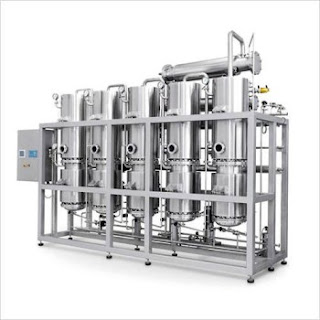Difference Between Sterilization and Depyrogenation
Sterilization is a process of removing all microorganisms from the process, whereas Depyrogenation is the process of removing pyrogens from the process. We will see in detail, in this post.
What are pyrogens?
- Pyrogens mean fever; a fever-inducing substance.
- Pyrogens are bacterial endotoxins that contaminate the process and ultimately impact human health.
- Pyrogens are substances that can produce a fever. The most common pyrogens are endotoxins, which are lipopolysaccharides (LPS) produced by Gram-negative bacteria such as E. coli.
- Examples of pyrogen-producing gram-negative bacteria are Escherichia coli (E. Coli), Proteus, Pseudomonas, Enterobacter, and Klebsiella
What are bacterial endotoxins?
Simply endotoxins are waste products of the bacteria.
An endotoxin is a lipopolysaccharide (LPS) found in the cell wall of gram-negative bacteria.
It is a typical pyrogen, which induces various biological reactions when even a small amount enters the bloodstream.
Due to its heat resistance and stability, complete inactivation of endotoxin is not possible with autoclaving. This is a reason why autoclaving and dehydrogenation both are mandatory in the sterile formulation process.
Dry heat sterilization for at least 30 minutes at a temperature of 250 °C or more is required for complete inactivation,.
It exists in the environment (e.g. water, air) inhabited by gram-negative bacteria, and bacterial endotoxins (LPS) remain even after the bacteria die.
Read also,
Depyrogenation Tunnel Principle
Impact of bacterial endotoxins on health:
Bacterial endotoxins can cause fever by elevating the body temperature. Hence these bacterial endotoxins (pyrogens) are required to be removed from the process. For a parenteral product, it is a prerequisite to removing pyrogens from the process.
Whereas sterilization is a process in which all microorganisms are killed or reduced to 6 logs. In parenteral preparations, water is a vehicle. About 98 % of the dosage form is from water. So water is a major cause of microbiological contamination. Hence, before using, water is treated and Water for injection is prepared. Which makes it free from pyrogens.
Process flow for preparation of Water for injection (WFI):
Source water treatment:
water coming from a corporation or from a well is said to be a source-water. The source water has to be tested for six months for the identification of the quality of water.
10. Importance of HVAC system in pharmaceutical industry
Potable water:
Source water is chlorinated to make potable water. After chlorination, the water can be used for drinking purposes.
Purified water:
Purified water is prepared by adding cationic and anionic resins in potable water and later the water is passed through UV for the killing of microorganisms. During this process, the minerals, cations, and anions were removed.
Water for injection:
The final stage is the preparation of WFI. In this process through multi-column distillation process Water for injection s prepared.
- On a daily basis, the water for injection generation points and user points are required to be sampled and tested for the identification of its chemical and micrological content. The data of the same is trended monthly and annually.
- Also, the isolate's identification data has to be maintained at the site. for understanding the sources of contamination.
- Both processes are mandatory for the sterile manufacturing process. Sterile drug substances are directly instilled into the bloodstream, so if sterility is not ensured then it will directly cause the death of the patient by microbiological infection.
Pyrogen Identification Tests:
- The Limulus Amoebocyte Lysate Test
- The Rabbit Pyrogen Test
- Monocyte activation test


Comments
Post a Comment
If you have any doubt please let me know. Thank you.